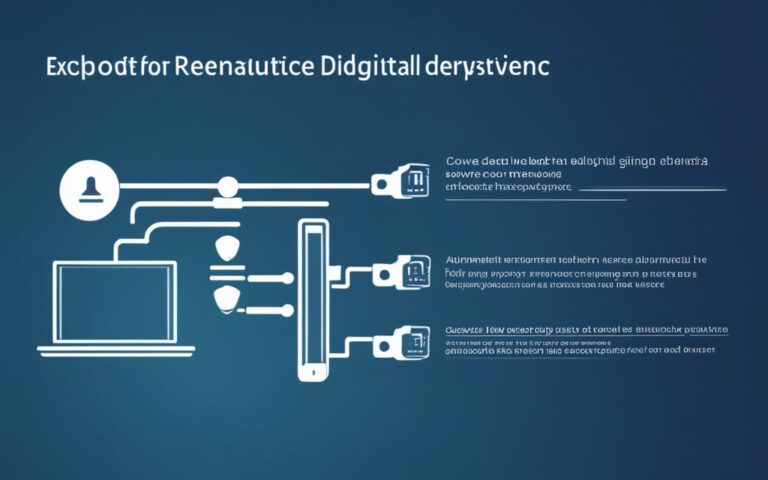The Role of Automated Tools in the Data Destruction Process
Today’s businesses are faced with an increasing volume, variety, and velocity of personal data. In 2020 alone, approximately 1.7 MB of data was created per second for each person worldwide, resulting in over 2.5 quintillion bytes of data being generated daily. With such vast amounts of data being produced, 95% of businesses acknowledge the need to improve data management processes, particularly for unstructured data. This presents both opportunities and challenges for organizations in terms of data retention policies and regulations.
While the exchange of personal data can offer value to customers and drive business innovation, it also creates the challenge of adhering to various data protection regulations. California Privacy Rights Act (CPRA) storage limitation, for example, instructs businesses to only retain mission-critical data and eliminate unnecessary data to protect personal privacy. However, many organizations struggle to implement and enforce data retention policies, leading to a loss of consumer trust.
To address these challenges, automated data retention and deletion programs can streamline the data management process, reduce attack surfaces, improve security practices, streamline data costs, and ensure compliance with data retention policies.
Automated data destruction plays a vital role in safeguarding sensitive information while ensuring compliance and efficiency in data management. By adopting automated tools, organizations can protect personal privacy, maintain trust, and optimize their data destruction processes.
The Benefits of Automated Data Retention and Deletion Programs
Teams that adopt automated data retention and deletion programs can enjoy numerous advantages. These programs play a crucial role in reducing attack surfaces by minimizing the amount of stored data, thereby decreasing vulnerabilities and the potential for data loss.
“By minimizing the amount of stored data, organizations can reduce attack surfaces, vulnerabilities, and the potential for data loss.”
Furthermore, automated data retention and deletion programs improve security practices by distinguishing between data deletion and data erasure. This ensures that erased data is irretrievable, reinforcing data privacy and protection.
“Automated data retention and deletion programs improve security practices by distinguishing between data deletion and data erasure.”
Another significant benefit of these programs is the streamlined data costs they offer. By allowing businesses to reuse storage media in a compliant and cost-effective manner, automated data retention and deletion programs help minimize expenses associated with destroying and replacing storage media.
“Automated data retention and deletion programs help businesses streamline data costs by enabling the reuse of storage media in a compliant and cost-effective manner.”
To illustrate the cost-saving potential, consider the comparison between the costs of traditional media destruction methods and automated data retention and deletion programs:
| Traditional Media Destruction | Automated Data Retention and Deletion Programs |
|---|---|
| Expense of physically destroying and replacing storage media | Opportunity to reuse storage media, reducing overall costs |
| Lack of compliance with data retention policies | Better compliance with regulatory requirements |
| Inability to generate auditable records of data erasure | Availability of auditable records of data erasure |
By automating data retention policy implementation, organizations can achieve better compliance with regulatory requirements, reduce the time and effort required for manual processes, and generate auditable records of data erasure.
The Value of Automated Data Retention and Deletion Programs:
- Reduced attack surfaces and vulnerabilities
- Enhanced security practices
- Streamlined data costs
- Better compliance with regulatory requirements
- Resource and time savings
- Auditable records of data erasure
Automated data retention and deletion programs offer substantial benefits to organizations, enabling them to safeguard sensitive data, optimize storage resources, and adhere to data protection regulations. By embracing automation, businesses can secure their data, enhance operational efficiency, and ensure compliance in an increasingly data-driven world.
Operationalizing Data Retention Policies with Automation
Traditionally, implementing an effective data retention policy has been a labor-intensive process. Manual identification and tracking of data in violation of retention policies is time-consuming and prone to errors. To address this challenge, organizations are turning to automation to streamline the operationalization of data retention policies.
By using automation tools, such as OneTrust, organizations can continuously scan and monitor structured and unstructured data, extract metadata for retention and minimization policies, leverage AI-delivered regulatory intelligence to understand data retention laws, update policies dynamically, and enforce downstream removal or redaction of data. Automation enables organizations to scale their data retention efforts, improve efficiency, and reduce the risk of non-compliance.
| Benefits of Operationalizing Data Retention Policies with Automation |
|---|
| 1. Streamlined process |
| 2. Improved accuracy |
| 3. Enhanced compliance |
| 4. Reduced manual effort |
| 5. Increased efficiency |
Automating and Scheduling Data Erasure Tasks
In today’s data-driven world, organizations face the daunting task of managing and protecting vast amounts of sensitive information. With the constant generation of zettabytes of data, it is essential for businesses to securely and permanently erase data that is no longer needed. This is where the automation of data erasure tasks becomes crucial.
By automating data erasure tasks, organizations can efficiently manage their data and ensure compliance with data protection regulations. Automation tools, such as BitRaser File Eraser, offer advanced capabilities to schedule erasure tasks at regular intervals and specify criteria for data deletion. This enables organizations to streamline the process of securely erasing sensitive information, saving valuable time and resources.
Automated data erasure also helps reduce errors and improve data hygiene. Manual data erasure methods are prone to human mistakes, leading to incomplete or inaccurate erasure. However, with automation, organizations can rely on consistent and reliable processes, minimizing the risk of data breaches or unauthorized access to sensitive information.
Furthermore, automated data erasure provides organizations with detailed reports and certificates of erasure. These serve as proof of compliance with data protection regulations and act as audit trails for internal and external stakeholders. Organizations can easily track and verify the erasure of data, enhancing accountability and transparency.
By embracing automation in data erasure tasks, organizations can achieve efficient data management, strengthen security measures, and adhere to regulatory requirements. It enables them to effectively protect sensitive information, reduce the risk of data breaches, and bolster customer trust in their data handling practices.
Key Benefits of Automating Data Erasure Tasks:
- Enhanced Efficiency: Automation streamlines the process of data erasure, saving time and resources.
- Reduced Errors: Automated data erasure minimizes human mistakes, ensuring accurate and complete erasure.
- Data Hygiene Improvement: Automation helps maintain high data hygiene standards by securely erasing unnecessary information.
- Compliance Assurance: Automated data erasure provides detailed reports and certificates, ensuring compliance with data protection regulations.
- Accountability and Transparency: Automation facilitates audit trails and verification of data erasure, enhancing accountability and transparency.
Embracing automation in data erasure tasks empowers organizations to effectively manage their data, safeguard sensitive information, and uphold privacy standards. By prioritizing automated data erasure, businesses can minimize risks, enhance operational efficiency, and ultimately build a strong foundation for secure and compliant data management.
Automating Document Retention and Destruction
Managing document retention and destruction can be a tedious and time-consuming process. However, with automation tools, such as FileTrail’s IG suite, organizations can simplify and centralize their document management processes. These tools automate document retention and destruction policies, ensuring compliance with industry regulations and avoiding legal problems and fines.
Automation eliminates the guesswork of deciding which documents to keep and which ones to dispose of, as systems apply rules for how long to retain different types of records and flag documents ready for disposal. Automated workflows streamline the review and approval process, creating an audit trail of each reviewer’s actions and feedback. By adopting automated records management systems, organizations save time and resources, ensure compliance with data protection and privacy laws, and maintain an organized and secure document repository.
In today’s information-driven world, businesses handle vast amounts of data that require efficient retention and secure destruction. Automating document retention and destruction processes enables organizations to mitigate the risks associated with outdated or unnecessary records. By implementing automation tools, businesses can achieve the following benefits:
- Efficiency: Automation streamlines document retention and destruction procedures, reducing manual effort and saving time.
- Accuracy: Automated systems apply predefined rules and criteria, ensuring consistent and accurate decision-making about document retention and destruction.
- Compliance: With automated tools, organizations can adhere to industry regulations and avoid potential legal and regulatory issues.
- Cost-Effectiveness: Automation eliminates the need for manual labor, reducing operational costs associated with document management.
By leveraging automation in document retention and destruction, organizations can maintain a lean and secure information ecosystem. Automated systems enable efficient management of document lifecycles, from creation to disposition, minimizing the risk of data breaches and ensuring compliance with industry standards.
Conclusion
The use of automated tools in the data destruction process plays a vital role in ensuring compliance, security, and efficiency in data management. As the volume and complexity of data continue to increase, organizations must adopt automated data retention and deletion programs and implement effective document retention and destruction strategies.
By leveraging automation tools, organizations can streamline processes, reduce errors, save time and resources, and achieve compliance with data protection regulations. Automated data retention and deletion programs provide numerous benefits, including reduced attack surfaces, improved security practices, and streamlined data costs.
In conclusion, organizations that embrace automation in their data management practices are better equipped to protect sensitive information, maintain compliance, and optimize their data retention and destruction processes.
FAQ
What is the role of automated tools in the data destruction process?
Automated tools play a vital role in securely and permanently erasing data that is no longer needed. These tools enable organizations to schedule erasure tasks, specify criteria for data deletion, and automate the process of securely erasing sensitive information.
What are the benefits of automated data retention and deletion programs?
Automated data retention and deletion programs offer several benefits. They reduce attack surfaces by minimizing the amount of stored data, improve security practices by ensuring irretrievable data erasure, and streamline data costs by allowing businesses to reuse storage media. These programs also ensure compliance with data retention policies and generate auditable records of data erasure.
How can automation help in operationalizing data retention policies?
Automation tools, such as OneTrust, enable organizations to continuously scan and monitor data, extract metadata for retention and minimization policies, leverage AI-delivered regulatory intelligence, update policies dynamically, and enforce downstream removal or redaction of data. Automation scales data retention efforts, improves efficiency, and reduces the risk of non-compliance.
Why is automating and scheduling data erasure tasks important?
Automating and scheduling data erasure tasks allow organizations to efficiently manage and protect sensitive information. In a data-intensive world, automating data erasure ensures the secure and permanent removal of unnecessary data. This saves time, reduces errors, improves data hygiene, and ensures compliance with data protection regulations.
How can automation help in automating document retention and destruction?
Automation tools, such as FileTrail’s IG suite, simplify and centralize document management processes. These tools automate document retention and destruction policies, ensuring compliance with industry regulations and avoiding legal problems and fines. Automated workflows streamline the review and approval process, creating an audit trail of each reviewer’s actions and feedback.













